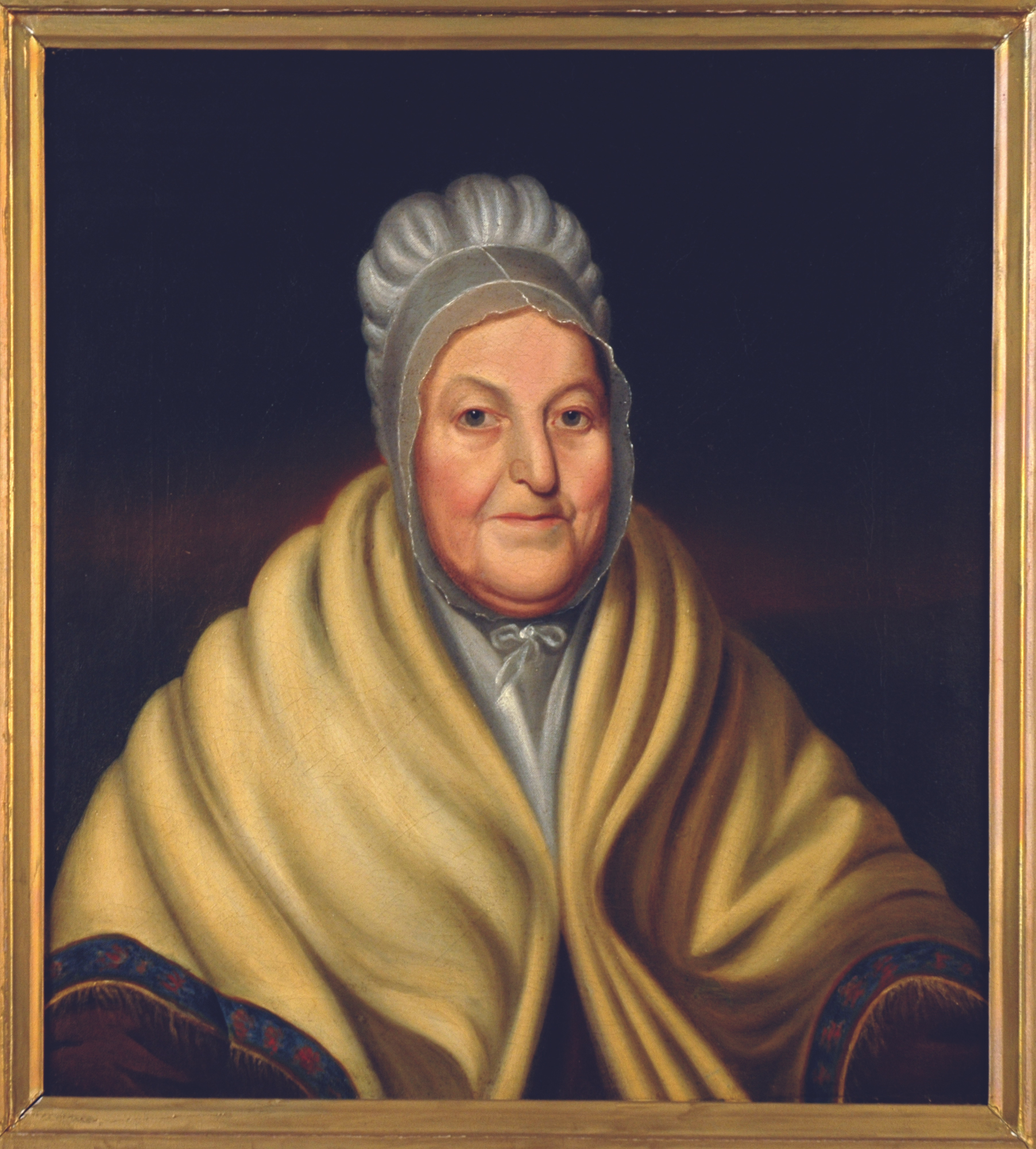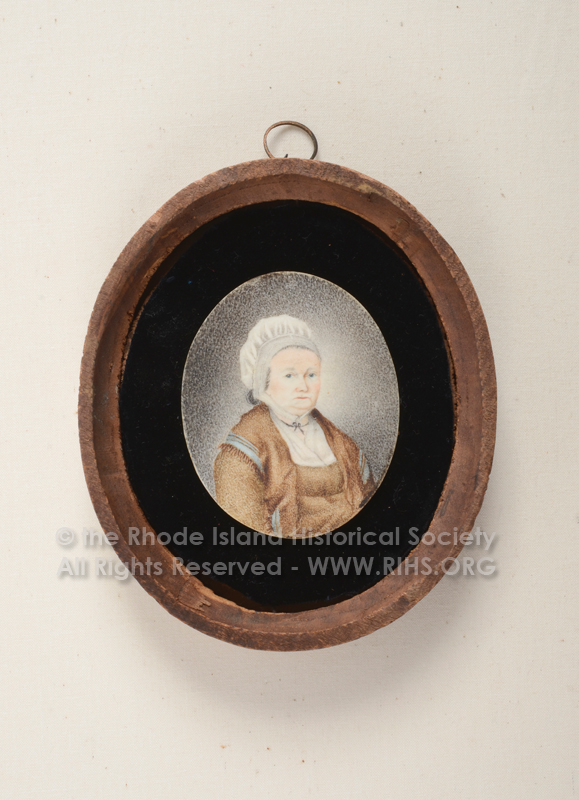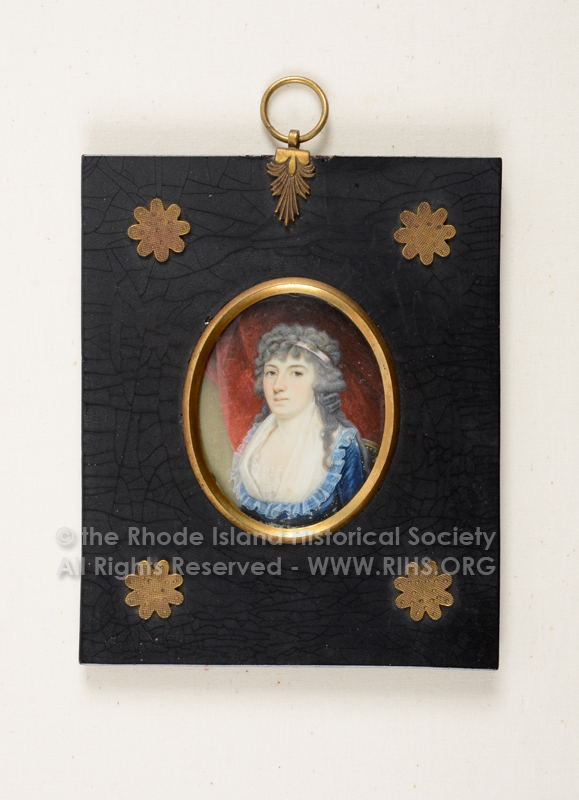
We know women wore caps in the late 18th and early 19th centuries; but are there particular caps styles more prevalent in Providence? Or at least among the Browns and their circle? How can we know what women wore on their heads in 1800?
One place to start is with portraits, and with an extant portrait of Sarah Brown, we can feel confident that she wore a cap, and most likely one that ties under the chin. We have caps like this in the collection, and one is currently displayed at the John Brown House Museum. The tie-under-the-chin cap was favored early in Rhode Island, too, as you can see in a portrait of Eleanor Cozzens Feke.

Hannah Peckham Weaver is also wearing a cap that ties under the chin, a style favored by older, and married, women. I think we can be confident that Sarah Brown wore a similarly styled cap in 1800.
Caps that tied under the chin were not just modest: they were also practical, and stayed put. As a basic form of head dress, caps kept hair covered and neat in a time before modern shampoos and conditioners.
For maids and working class women, caps kept hair tidy and out of the way during the fairly physical and frequently hot household routines of the late 18th and early 19th centuries. Caps that tied on, stayed on: caps that merely pin on, or are tied on with a ribbon, can come loose.

In 1795, Sally Brown had not yet married Carl Herreshoff; she’s 27 in this delicate miniature, and her stylishly large, powdered and beribboned hairstyle is as much a clue to the date as her gown. The interpreter who will play Sally won’t need to wear a cap. Instead, she will need an early 19th century hair style, and perhaps a lady’s maid to help her with it.

Thought this was very interesting. Thanks!
What other styles were there and when was it age appropriate for a female,who was not a domestic,to wear one ?
There were pleated and ruffled styles that did not tie on under the chin, and styles with lappets that did not tie. And that’s without considering wider regional and ethnic variations.
Caps were almost always worn by all women: age and class determined the quality of material and style of the cap. There is a time in the late 1770s and into the early 1800s when very high-style ladies (think Paris fashion) have high hairstyles and don’t wear caps. But for the most part, most women of all ages and classes wore a cap indoors and out. Outdoors, hats and bonnets were also worn.